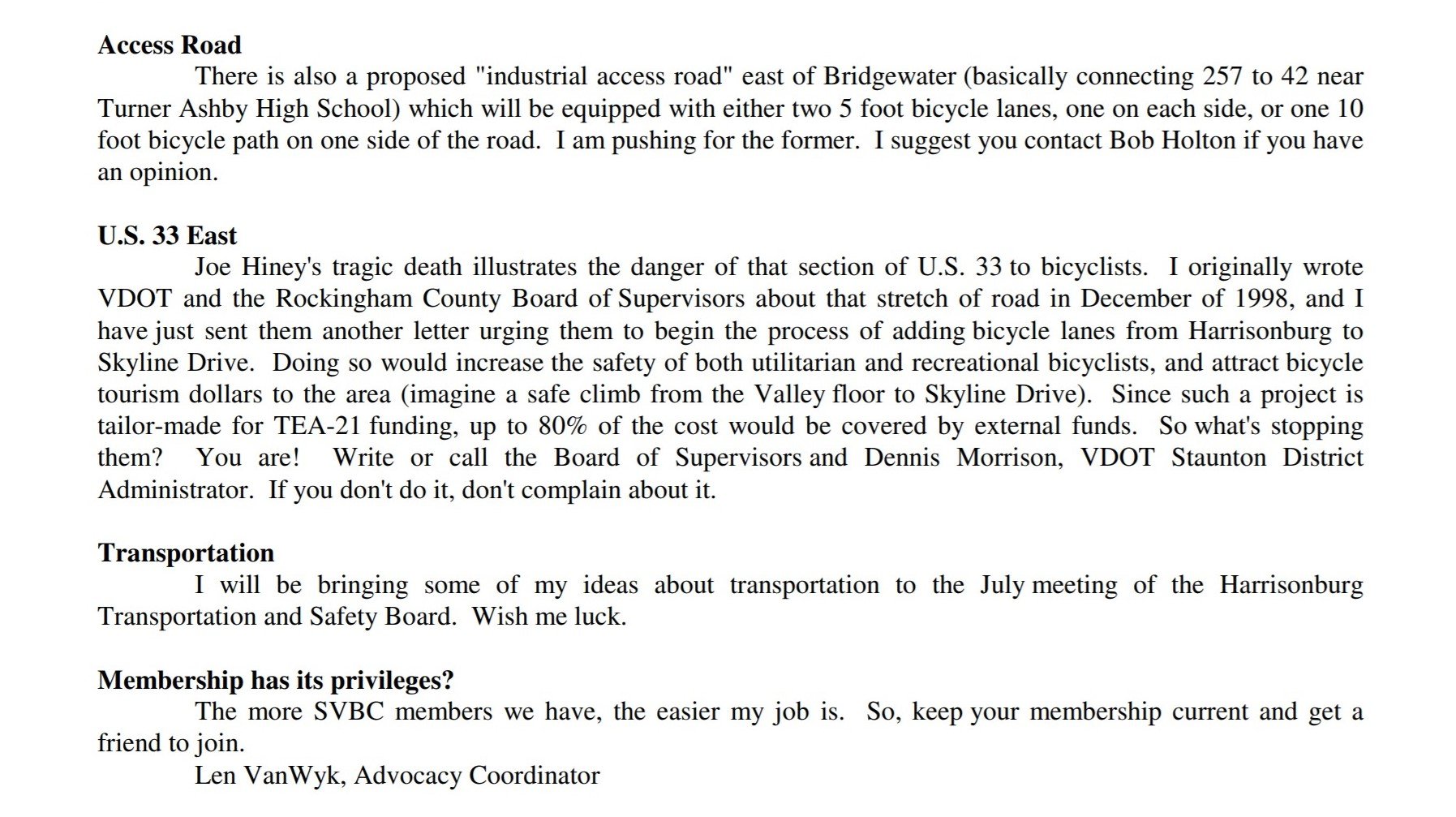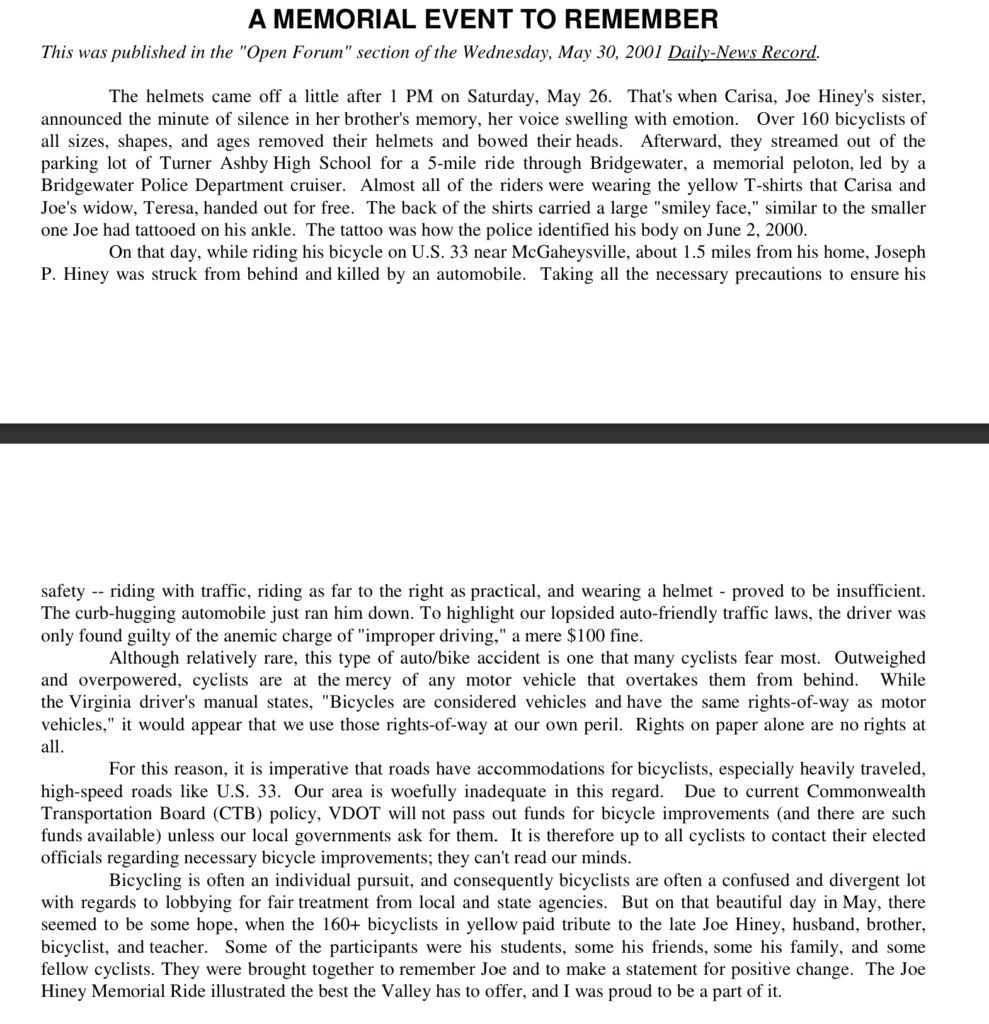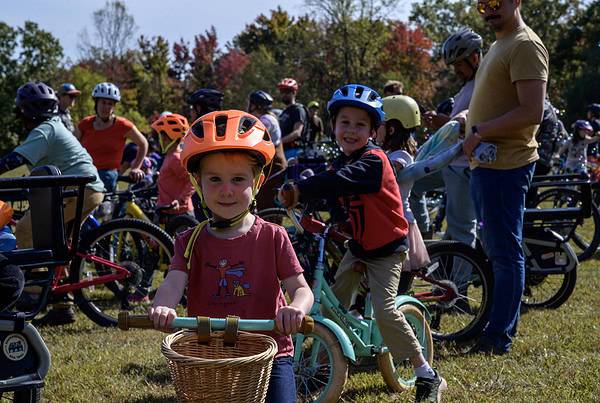
As we commemorate 25 years since Joe Hiney was killed, it is essential to remember the impact of his tragic death on bicycle safety laws and cyclist awareness campaigns.

June 2 will mark 25 years since Joe Hiney was tragically killed while riding his bicycle in a crash with a person driving a car. This event serves as a poignant reminder of the dangers that cyclists face every day on the road.
As we reflect on this milestone, which marks 25 years since Joe Hiney was killed, we delve into the circumstances surrounding his death and the subsequent changes in bicycle safety advocacy.
Below is an excerpt from the Shenandoah Valley Bicycle Coalition Newsletter in 2001. Many thanks to Ken Bell of Rocktown Bicycles for sharing these photos he took of Joe Hiney in 1990 when they were both at James Madison University together, capturing moments of camaraderie and shared passion for cycling.
25 Years Since Joe Hiney Was Killed
This anniversary of 25 years since Joe Hiney was killed is significant for both the community and bicycle safety advocates.
On that day, while riding his bicycle on U.S. 33 near McGaheysville, about 1.5 miles from his home, Joseph P. Hiney was struck from behind and killed by an automobile.
Taking all the necessary precautions to ensure his safety – riding with traffic, riding as far to the right as practical, and wearing a helmet – proved to be insufficient.
Joe’s story is not just a tragic incident; it is a rallying cry for improved cycling safety. Since his passing, numerous advocacy groups have emerged, pushing for legislative changes to protect cyclists.
The importance of bicycle lanes and safe routes has never been clearer. Many communities now recognize the need for infrastructure that prioritizes the safety of all road users.
The curb-hugging automobile just ran him down. To highlight our lopsided auto-friendly traffic laws, the driver was only found guilty of the anemic charge of “improper driving,” a mere $100 fine.
Although relatively rare, this type of auto/bike accident is one that many cyclists fear most. Outweighed and overpowered, cyclists are at the mercy of any motor vehicle that overtakes them from behind.
The memory of Joe Hiney continues to inspire discussions about road safety and the responsibilities of drivers and cyclists alike. Educational programs aimed at both groups are essential to fostering a culture of safety on the roads.
Mutual Respect
Incidents like Joe’s remind us of the need for vigilance and respect between cyclists and motorists. Advocates stress the importance of mutual awareness: drivers should be trained to look out for cyclists.
Meanwhile, cyclists must understand the rules of the road to navigate safely. The tragic nature of Joe’s accident underscores the need for comprehensive education and awareness campaigns.
Moreover, campaigns advocating for stricter penalties for drivers involved in accidents with cyclists have gained traction. The current legal framework can often feel inadequate.
Many believe that harsher consequences for negligent driving would deter reckless behavior. Statistics show that the number of bicycle-related fatalities has remained a concern, highlighting the need for ongoing advocacy.

Creating awareness around the need for these paths involves community engagement and public support. Local governments can facilitate workshops and forums to educate residents on the benefits of cycling infrastructure.
The more people understand the positive impact of safe cycling routes, the more likely they are to advocate for them.
While US 33 still lacks bicycle facilities in Rockingham County, since Joe’s death, Rockingham County has adopted its first Bicycle and Pedestrian Plan, which identifies the US 33 corridor as a high priority. Envisioning a Shared Use Path along or in the middle of US 33 opens up possibilities for safer travel for cyclists and pedestrians alike. Such infrastructure not only enhances safety but also encourages more people to take up cycling, contributing to healthier lifestyles and reduced traffic congestion.
While US 33 still lacks bicycle facilities in Rockingham County, since Joe’s death, Rockingham County has adopted its first Bicycle and Pedestrian Plan.
This plan identifies the US 33 corridor as a high priority. Envisioning a Shared Use Path along or in the middle of US 33 opens up possibilities for safer travel for cyclists and pedestrians alike.




Remembering Joe
As we remember Joe Hiney, reflecting on how far we have come and how much further we need to go is crucial. Advocacy will continue to play a vital role in shaping safer environments for people riding bikes.
Communities, families, and friends can honor Joe’s memory by committing to making roads safer for all users.
Ensuring that such tragedies do not happen again is essential. The lessons learned from Joe’s unfortunate incident must drive us to create impactful changes in policy and infrastructure.




